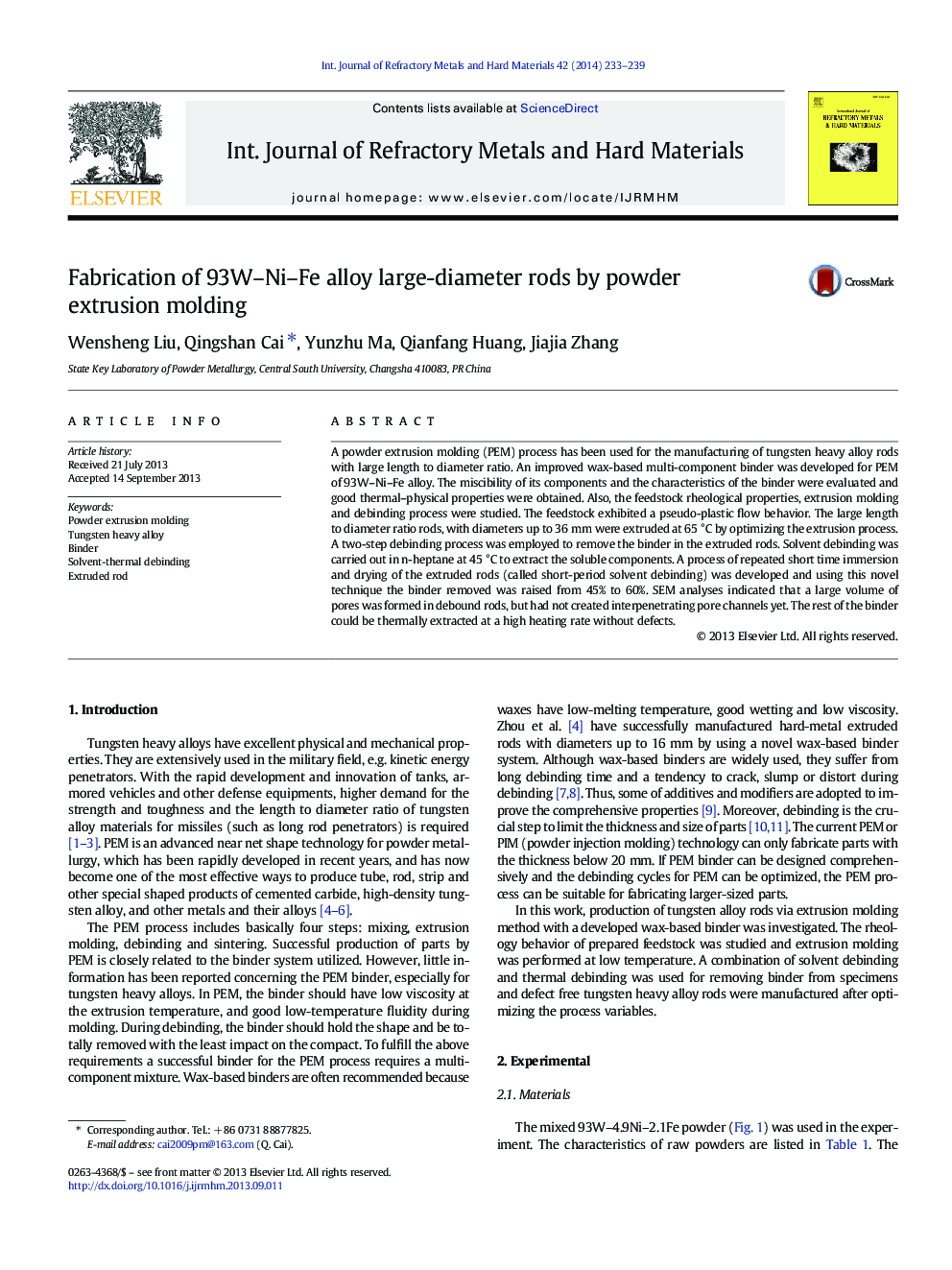| Article ID | Journal | Published Year | Pages | File Type |
|---|---|---|---|---|
| 1603374 | International Journal of Refractory Metals and Hard Materials | 2014 | 7 Pages |
•Fabrication of W–Ni–Fe alloy rod with large aspect ratios by PEM is investigated.•A developed wax-based binder for low temperature extrusion molding was examined.•The solvent-thermal debinding behaviors of large-diameter rods are investigated.•A defect-free debinding process for large-thickness sample is proposed.
A powder extrusion molding (PEM) process has been used for the manufacturing of tungsten heavy alloy rods with large length to diameter ratio. An improved wax-based multi-component binder was developed for PEM of 93W–Ni–Fe alloy. The miscibility of its components and the characteristics of the binder were evaluated and good thermal–physical properties were obtained. Also, the feedstock rheological properties, extrusion molding and debinding process were studied. The feedstock exhibited a pseudo-plastic flow behavior. The large length to diameter ratio rods, with diameters up to 36 mm were extruded at 65 °C by optimizing the extrusion process. A two-step debinding process was employed to remove the binder in the extruded rods. Solvent debinding was carried out in n-heptane at 45 °C to extract the soluble components. A process of repeated short time immersion and drying of the extruded rods (called short-period solvent debinding) was developed and using this novel technique the binder removed was raised from 45% to 60%. SEM analyses indicated that a large volume of pores was formed in debound rods, but had not created interpenetrating pore channels yet. The rest of the binder could be thermally extracted at a high heating rate without defects.
